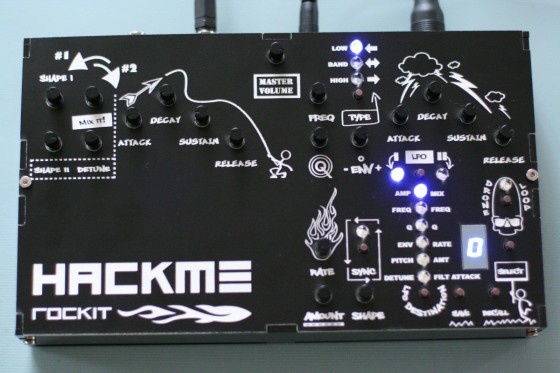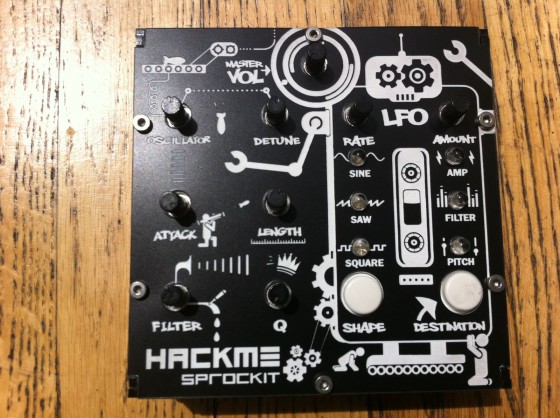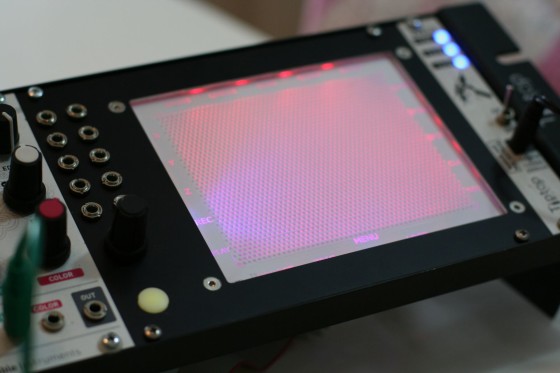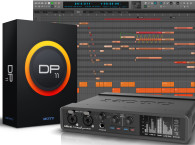
MATT HEINS: In a previous life, I was a drum and bass DJ with music production aspirations. I built a little studio with a few hardware synths, effects processors, and a Pro Tools rig. Sitting in the studio one day, I realized that I was more interested in the electronics than I actually was in writing music. I would obsessively read audio magazines, skipping to the gear reviews. I was particularly interested in “Behind-the-Gear” type features and interviews with the hardware creators, wondering how they came to design hardware. Eventually, I decided that I would learn how to build audio hardware myself. So, I went back to school (for the third time), to get a degree in Electrical Engineering. When I finished, I sent an e-mail to just about every audio electronics company I knew of begging them to hire me. Each time I received basically the same response (if they responded at all): “We’re a three-person company with no budget to hire anyone nor the interest in teaching you everything you need to learn.” So, I took a job making consumer electronics and started Hackme Electronics at night to pursue my goal of working in audio electronics.
SHANNON: Tell us about Hackme Electronics. What type of products do you offer?
MATT: Hackme Electronics started as a blog where I wrote technical articles on audio and electronics topics about which I was learning. I’ve written over 75 blog posts on various topics about the fundamentals of electronics, digital audio, and practical analog audio circuits. Collectively, they’ve been viewed hundreds of thousands of times. From the outset, I’ve wanted to make open-source projects to broaden the depth of available audio engineering information on the Internet. I found detailed information about critical audio engineering concepts to be totally lacking. So, I made it my goal to build and sell interesting audio devices and to make their designs totally open and available. Since 2011, I’ve been building and selling open-source synthesizers, mostly as kits, but also building quite a few by hand myself.
SHANNON: Describe your first project, the Rockit 8-bit Synth?

SHANNON: You also created Sprockit, which is a downsized version of Rockit. Why offer a scaled back version?

SHANNON: How did you get the means to fund your projects?
MATT: I funded Rockit and Vectr through Kickstarter. For me, funding a design with Kickstarter is a low- risk approach with a strong marketing upside. Kickstarter provides an avenue for selling products with a lower upfront investment. Instead of betting all your savings on a new idea, you can test the waters to see if your product has a market before you invest massive amounts of time and money. I’m not sure any of my designs would’ve seen the light of day if it weren’t for Kickstarter. Hardware is expensive to develop and produce. Knowing that you have buyers before you start production is an excellent anxiety-reduction technique. I’m not as concerned with the time investment as I’ve learned more building these devices than from any job or book. But I can’t sacrifice my kid’s college savings to bet on my latest audio project. In the past, a hardware creator would have to get almost entirely through development, produce a number of fully-functional prototypes, and physically take them to brick-and-mortar retailer to pitch. Then, they may have to pay the upfront manufacturing costs out of pocket and wait some time to receive a check from the distributor or retailer. Kickstarter alleviates this problem by providing a low-risk presale venue. I’m much better off today than the one-man synthesizer manufacturers of the 1980s.
SHANNON: To what do you attribute their success?
MATT: I think the most critical determinant of success is the product, having an idea which resonates with people. Beyond that, making a video that clearly demonstrates the capabilities of a working prototype lets people know that you have a good idea and the skills necessary to bring it to market. I also spend a lot of time on the text, writing a compelling argument to convince people that they want to get behind the idea. All in all, I believe you’ll get back in return the amount of effort you put into it.
SHANNON: What surprised you the most about your first Kickstarter experience?
MATT: The best, most surprising, and potentially the most valuable aspect of doing a Kickstarter campaign is the engagement I get with my backers. When someone bets on your product, and by proxy you, they become an engaged participant in your product’s development. They really put a lot of thought into your design. Some of them become almost like a beta test group, providing feedback and suggesting new features. It’s incredibly valuable. I’ve always heard that Bob Moog spent a lot of time listening to his customers. I find that Kickstarter forms a venue for me to hear from users, even before the device is finished.
SHANNON: Tell us about Vectr.
MATT: Vectr is a new eurorack controller and sequencer centered around cutting edge three dimensional sensing electronics. Vectr generates an electrical field within a limited area up to about 6” away from its surface. It senses disturbances in the electrical field caused by the presence of a hand or any other conductive object. Vectr translates the location of the user’s hand into three outputs: one for left to right, one for top to bottom, and one for near to far. The control surface is illuminated by LEDs, which provide instantaneous feedback and lighting up in a way that corresponds to the user’s hand movements. The three outputs can be patched to

SHANNON: Where did the idea for this 3-D control interface come from? What makes it unique?
MATT: The technology enabling the interface was developed by Microchip Technology. As soon as I saw the advance press release, I knew what I could make with it and I started really thinking about it. My profession is building devices and I really enjoy developing products using new technologies, so I knew exactly what I wanted to do as soon as it was available. What makes this interface unique is the ability to control three parameters at the same time. It’s like having three coordinated hands, moving smoothly in unison, or if you use two of them, like having six hands! To my knowledge, no existing device has delivered this level of control. There are other interface devices with multiple control outputs, but nothing that can match this interface’s fluidity or variability. Vectr provides an entirely new and direct way to interact with audio. The control is instantaneous and fluid in a way that would be hard to duplicate in any other way.
SHANNON: Has Vectr started shipping yet? What kind of response has it received from your backers?
MATT: Vectr ships this summer, so no backers have played with the finished device as of this interview. I have publicly demonstrated it though and the response is generally astonishment. I’ll never forget the sound an audience made at my first public demonstration. The first time my hand waved in front of Vectr and the sound matched my movement, the audience let out a collective gasp. It was incredible.
SHANNON: What is next? Are you working on anything new?
MATT: I have plans for expanding the Vectr product line. I’ll be making modules that can directly interface with Vectr and leverage the unique interface. I also have plans to build a standalone Vectr device with new expanded features.
Hackme Electronics: http://hackmeopen.com






